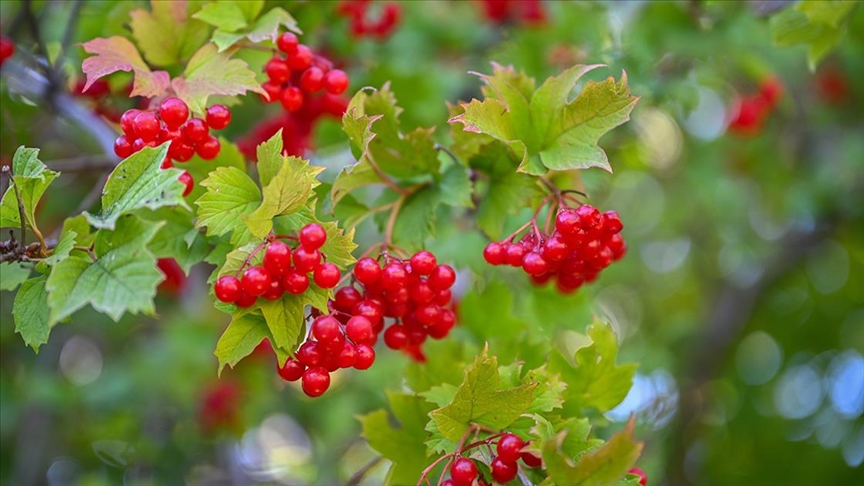Akkışla Gilaburusu (Viburnum opulus) is a perennial plant species in shrub form, cultivated in the Akkışla district of Kayseri province in Turkey's Central Anatolia Region. This plant, popularly known as “gilaburu,” grows in harmony with the natural conditions of Kayseri and is processed using traditional production techniques identified with the region. Akkışla Gilaburusu was taken under protection on February 12, 2021, by receiving a geographical indication registration with a designation of origin (menşe adı) from the Turkish Patent and Trademark Office.
Botanic and Physical Characteristics
The Akkışla Gilaburusu plant can grow between 1.5 and 4 meters in height. It bears 30-40 fruits per cluster, which are bright red, oval, odorless, and acidic in nature. The fruits are generally chickpea-sized; their diameters are approximately 8 ± 0.3 mm and their weights are 0.7 ± 0.2 grams. The plant, which blooms white flowers in spring, produces fruits that turn from green to red at the end of summer, and the harvest is usually done in October-November.
Cultivation Conditions and Production Method
Akkışla Gilaburusu is grown naturally around the Kesdoğan spring water flowing through the district or in special areas called "kapama bahçeleri" (enclosed orchards). Irrigation and brining (salamura) processes are carried out with this spring water. Although the region is under the influence of a continental climate, the climate is milder thanks to the Kesdoğan Stream, which exhibits microclimate characteristics. The soil where gilaburu grows has a clay-loam structure; its pH value is 7.55 and it has a slightly alkaline character. Thanks to the high lime, potassium, and phosphorus content of the soil, large-grained and abundant-clustered fruits are formed.
In the production process, the plants are generally propagated by vegetative means. After the fruits are picked, they are brined in Kesdoğan water. Although this process was traditionally done with internally glazed earthenware jars, today 20-30 liter containers (bidonlar) are used. The brining period is at least 7 days. Before consumption, the fruits are removed from the brine, and their juice is squeezed and served as a beverage.

Akkışla Gilaburusu (Anadolu Ajansı)
Chemical Characteristics
Akkışla Gilaburusu contains high amounts of calcium (150–260 mg/kg) and zinc (3.56–6.35 mg/kg). The Vitamin C ratio varies between 25.6–64.2 mg/kg. The product's richness in organic acids and phenolic compounds places it in the functional food category.
Traditional Use and Consumption
Gilaburu is processed by brining as part of winter preparations in the region. The fruits removed from the brine are squeezed, and their juice is consumed. Freshly squeezed gilaburu juice is characterized by its bright red color and high tannin content. The taste profile is sour, slightly yeasty, and astringent. Traditionally, it is drunk diluted with water and without added sugar.
Socio-Cultural Importance and Economic Potential
Gilaburu production has been ongoing in Akkışla for many years, and this tradition is kept alive through festivals organized in the district. Gilaburu holds an important place due to both its health benefits and its economic contribution to the local people. With the registration of Akkışla Gilaburusu, it is aimed to brand the product, protect producer rights, and support regional development.
Inspection and Protection
Akkışla Gilaburusu is inspected every year between October and November by a three-person inspection commission established under the coordination of the Akkışla Municipality. Inspection criteria include whether the product is grown within the geographical boundary, the appropriateness of the brining process, and the control of physical-chemical properties.


